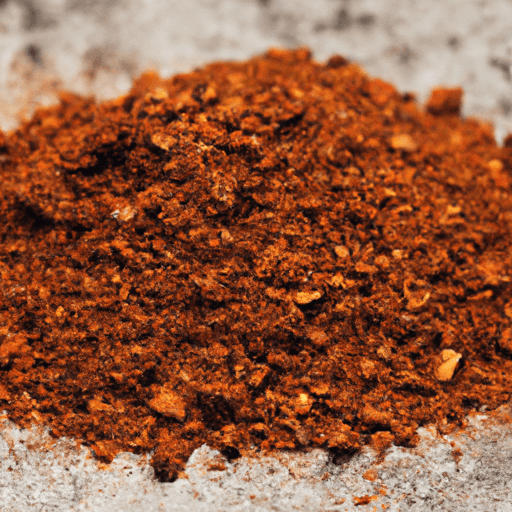Cooking With Amchar Masala: A Burst of Flavor in Every Bite
Amchar Masala, also known as Mango Powder, is a versatile spice that adds a tangy touch to a variety of dishes. With its unique flavor profile, it has become a staple in many South Asian cuisines. In this blog post, we will explore the taste, common uses, nutritional value, and interesting facts about Amchar Masala.
Taste and Aroma
Amchar Masala has a distinctive tangy and sour taste that brings a refreshing element to dishes. Its flavor is often described as a combination of citrusy, vinegar-like, and mildly spicy notes. The aroma of this spice is heavenly, with hints of tartness and sweetness that awaken the senses.
Common Uses in Cooking
Amchar Masala is a power-packed spice that adds zest to various culinary creations. Let’s explore its common uses:
1. Seasoning Fresh Fruits and Vegetables
Amchar Masala shines when sprinkled over fresh fruits and vegetables. It enhances the natural flavors of mangoes, melons, and papayas, making them even more delightful. A generous sprinkle of Amchar Masala on cucumber or raw salads brings a burst of tanginess to the dish.
2. Flavoring Curries and Chutneys
This spice blend is widely used to flavor curries, chutneys, and pickles. Adding a pinch of Amchar Masala to a vegetable curry or chana masala elevates the taste to a whole new level. It also works wonders in tomato-based gravies, lending a unique sourness without overpowering other spices.
3. Marinating Meats and Seafood
Amchar Masala is a fantastic seasoning for marinating meats and seafood. Its tangy notes infuse into the protein, enhancing the overall taste. Whether you’re grilling chicken tikka or stir-frying shrimp, adding a touch of Amchar Masala will give your dish an irresistible tang.
4. Snack Seasoning
Next time you’re looking for a zesty snack, reach for Amchar Masala. Sprinkle it on roasted nuts, popcorn, or homemade fries for a mouth-watering twist. The combination of spices and tang perfectly complements the crunch of snacks, creating a delightful experience.
Nutritional Value
Amchar Masala not only adds flavor to dishes but also offers several health benefits. This spice blend is rich in vitamin C, antioxidants, and other essential nutrients. It aids in digestion, boosts the immune system, and promotes overall well-being. Additionally, it is low in calories and fat, making it a guilt-free addition to your meals.
Interesting Facts and History
Here are some intriguing facts about Amchar Masala:
Derived from raw, unripe mangoes: Amchar Masala is made by drying and grinding raw, unripe mangoes. This process helps retain the tanginess and nutritional value of mangoes, preserving it for culinary use.
A traditional Indian spice: Amchar Masala has been used in Indian cuisine for centuries. Its origins can be traced back to the Ayurvedic traditions, where it was valued for its digestive properties and unique taste.
An essential ingredient in Chaat: Chaat, a popular Indian street food, often features Amchar Masala as a key flavoring ingredient. Its tanginess contributes to the explosion of flavors in this delectable snack.
Now that you have discovered the wonders of Amchar Masala, it’s time to experiment with this incredible spice in your own kitchen. Whether you’re adding a sprinkle to your favorite curry or using it as a seasoning for fresh fruits, the possibilities are endless. Embrace the tangy enchantment of Amchar Masala and take your taste buds on a flavorful journey!
Amchar masala, also known as amchur masala, is a spice blend that originates from the Indian subcontinent. Here are some facts about this ingredient:
Origin:
- Amchar masala originated in India, specifically in the northern regions, where the use of dried mango powder (amchur) is prevalent in cooking.
- The word “amchur” is derived from the Hindi words “am” meaning mango and “chur” meaning powder.
- The spice blend is often associated with Punjabi cuisine but is used in various regional dishes throughout India.
Common Uses:
- Amchar masala is primarily used to enhance the flavor of dishes by providing a tangy and slightly fruity taste.
- It is commonly used as a souring agent in vegetarian and vegan dishes, especially in curries, chutneys, and marinades.
- It is particularly popular in dishes with potatoes, lentils, and vegetables, where it adds a tartness reminiscent of green mangoes.
- Amchar masala is also used as a condiment and sprinkle seasoning on snacks like pakoras and samosas.
Nutritional Benefits:
- Amchar masala is low in calories and fat, making it a suitable addition to various diets.
- It contains essential nutrients like vitamin C, iron, and antioxidants.
- The spice blend is known for aiding digestion and stimulating appetite.
- It has significant amounts of dietary fiber, which can support digestive health.
Unique Properties and Historical Significance:
- Amchar masala imparts a distinct tanginess to dishes, distinguishing it from other spice blends.
- The primary ingredient, dried mango powder (amchur), is made by drying green unripe mangoes and then grinding them into a fine powder.
- The drying process concentrates the flavors and preserves the tartness of the mangoes.
- Historically, souring agents like amchur were used to impart a tangy taste to dishes during times when fresh fruits like lemons were not readily available.
- Amchar masala has a long-standing presence in Indian cuisine and is an essential component of many traditional recipes.




Use the share button below if you liked it.
It makes me smile, when I see it.